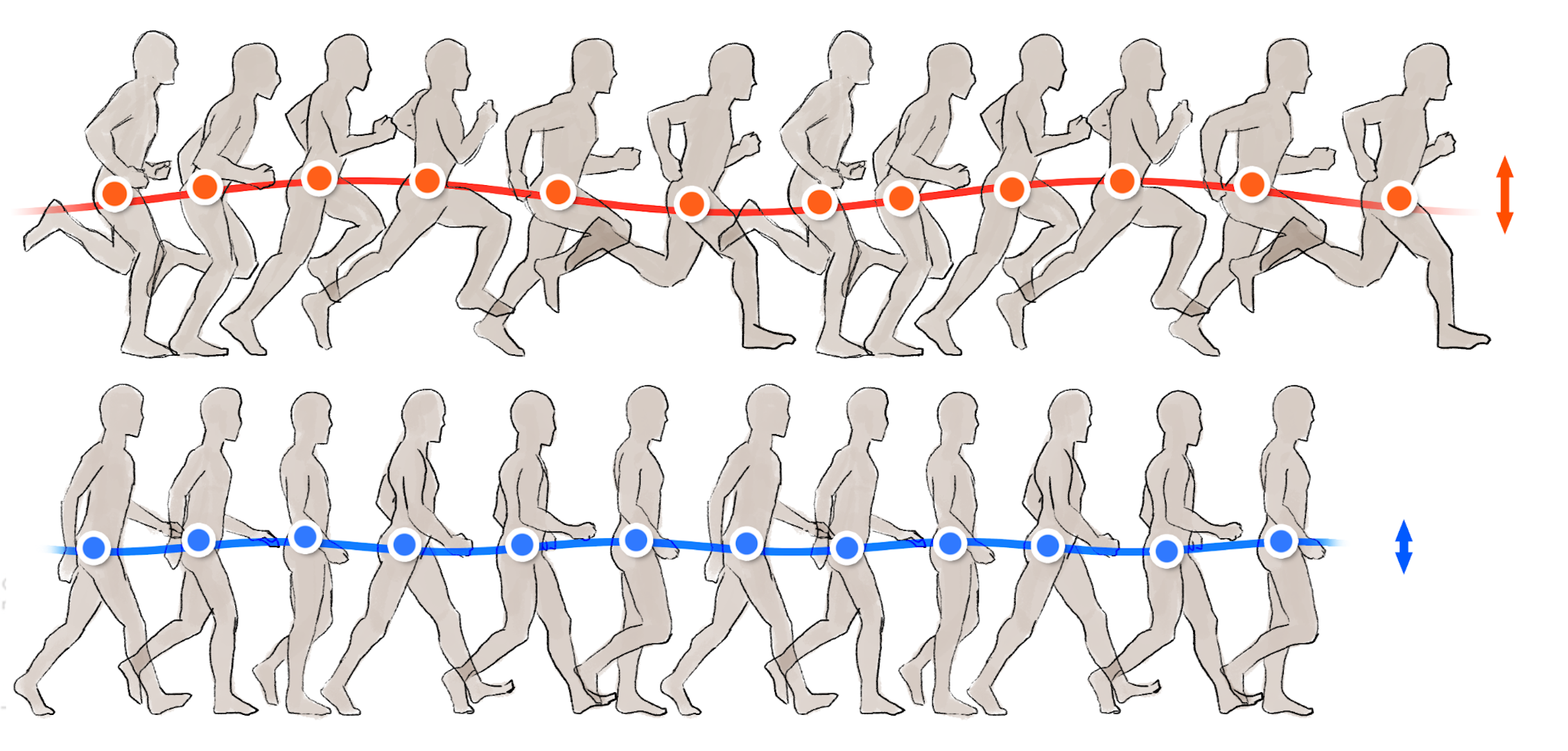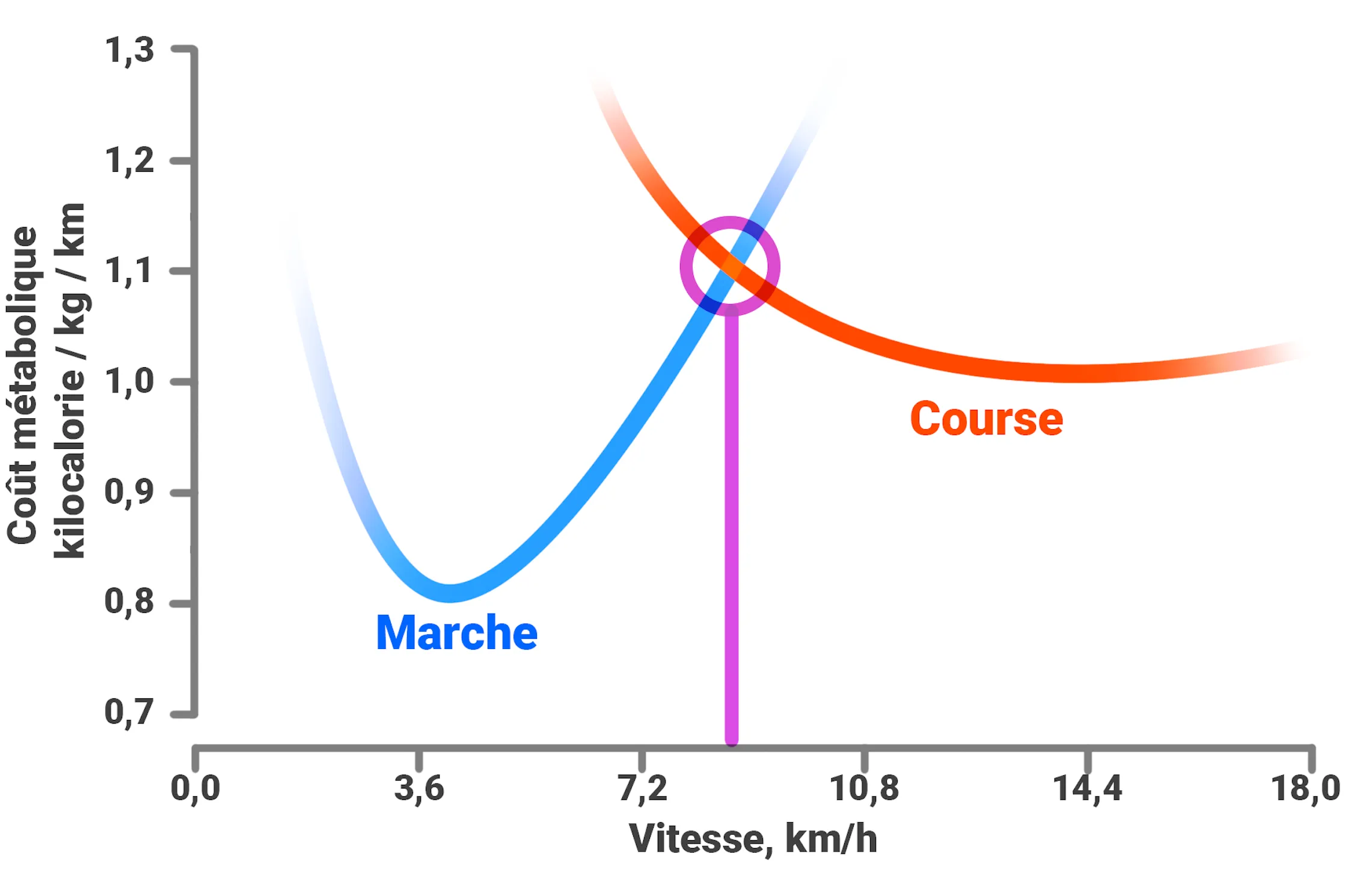Walking or running the same route: which consumes less energy?
Published by Redbran,
Source: The Conversation under Creative Commons license
Other Languages: FR, DE, ES, PT
Source: The Conversation under Creative Commons license
Other Languages: FR, DE, ES, PT
Follow us on Google News (click on ☆)
It's Monday morning, your alarm rings, and it's already 7:30 AM—you're 30 minutes late. Normally, it takes you 45 minutes to walk the 1.86 miles (3 kilometers) to your workplace, but this morning it will be a 20-minute run. However, during your lunch break, you feel more tired than usual and you think you used more energy on the route today. But you covered the same distance as other days—how is that possible?

The caloric expenditure associated with an activity is called the "metabolic cost," and it corresponds to the energy used by our organs to cover a given distance. This metabolic cost can be determined by analyzing gas exchanges. Based on the oxygen consumed and carbon dioxide produced, we can estimate the amount of energy expended by our body, and thus the metabolic cost. It was through this method that, as early as the 1970s, researchers already answered our question.
So, and this might not surprise you much, running consumes more energy than walking for the same distance. How can this be explained?
Energy lost while running
Imagine you are watching someone run. Now, closely observe the vertical movement (up and down) of their pelvis and head. As seen in the figure, our bodies oscillate more vertically when running compared to walking.
This means that the leg muscles need to generate more force to produce this vertical movement, which consumes more energy without bringing us closer to our destination. Thus, when running, a portion of the energy expended is used to move upward rather than forward. Therefore, the energy required to cover these 1.86 miles (3 km) is higher for running than for walking.

Running involves a much greater vertical oscillation of the center of mass than walking. This is the main reason why running is more energy-consuming than walking for the same distance covered.
François Dernoncourt, Provided by the author
This difference between walking and running is not limited to what happens during the activity itself. Each physical exercise causes a delayed energy expenditure over time, which adds to the expenditure during the activity.
Taking this parameter into account, running is once again more energy-consuming than walking. Right after running your 1.86 miles (3 km), the increased energy consumption (compared to rest) lasts for several minutes due to factors such as body temperature elevation and the replenishment of energy stores. This additional expenditure after running is more than double that observed after walking, due to the difference in intensity between the two exercises.
It all depends on speed
Running involves a higher caloric expenditure than walking for the same distance, but only if the walking speed considered is "normal," roughly 3.1 mph (5 km/h). So, if you walk very slowly, it will take you so long to cover these 1.86 miles (3 km) that the total caloric expenditure will be higher. This is because the body uses a certain amount of energy per unit of time, regardless of the activity being performed (known as the "basal metabolic rate").
The same observation applies if the walking speed is very fast (more than 5 mph (8 km/h)): running is more energy-efficient. In this scenario, the coordination required to walk at such a speed leads to increased muscle activation without being able to benefit from the elasticity of our tendons, as in running.
We even have a very precise intuitive perception of the energy efficiency of a particular mode of locomotion. If you move on a treadmill with gradually increasing speed, the speed at which you spontaneously switch from walking to running coincides with the speed at which walking becomes more energy-consuming than running!

Modeling of the metabolic cost (calories expended per kilogram per kilometer) versus speed (kilometers per hour) for walking and running. The curves intersect at a certain speed (purple line; around 5 mph (8 km/h)): this indicates that beyond this speed, walking becomes more energy-consuming than running. This speed threshold roughly corresponds to the speed at which individuals spontaneously switch from walking to running.
François Dernoncourt, Adapted from Summerside et al, Provided by the author
In conclusion, due to greater oscillation of the center of mass and increased post-exercise energy expenditure, commuting to work by running is more costly in terms of energy than covering the same distance by walking. However, whether you choose to walk or run to work, the most important thing is that you're already saving energy!